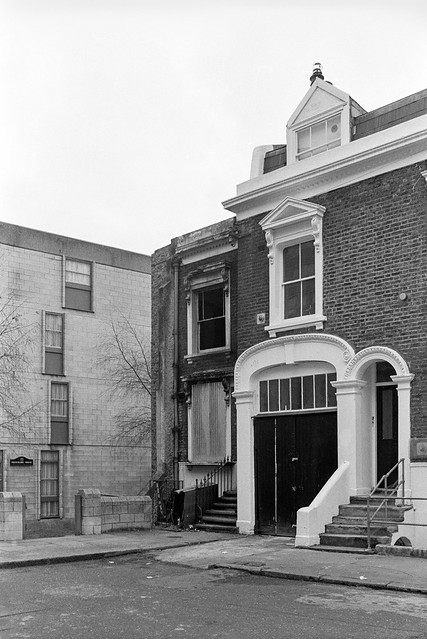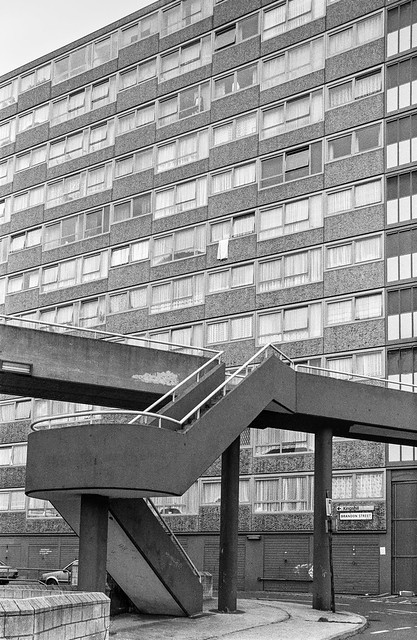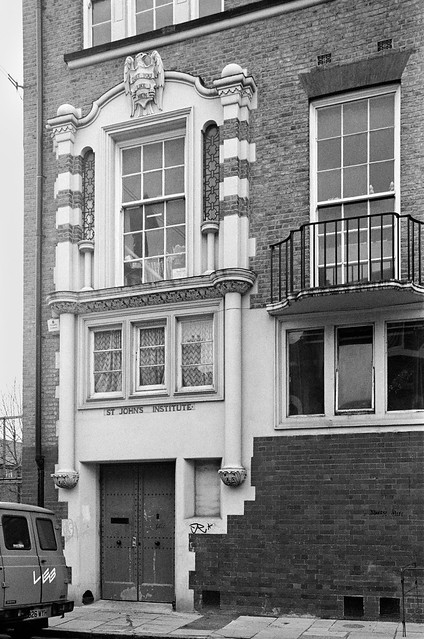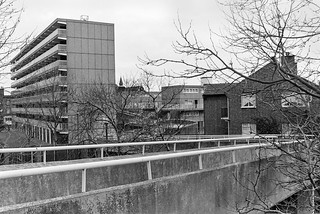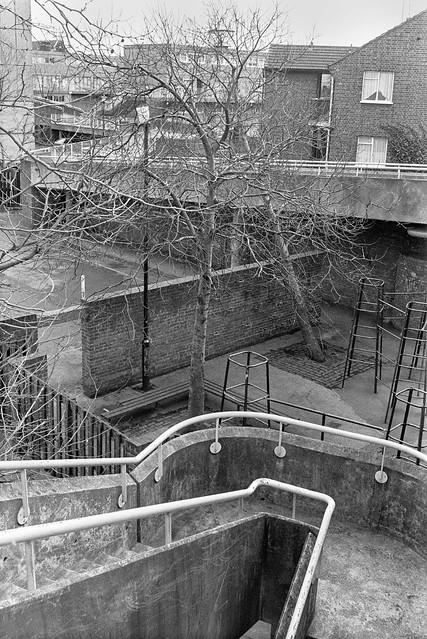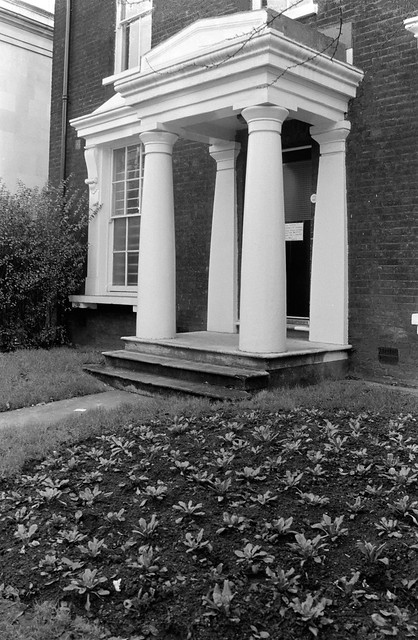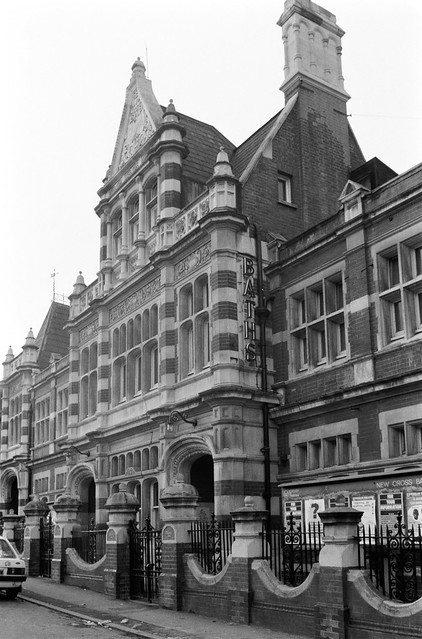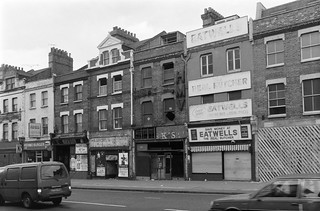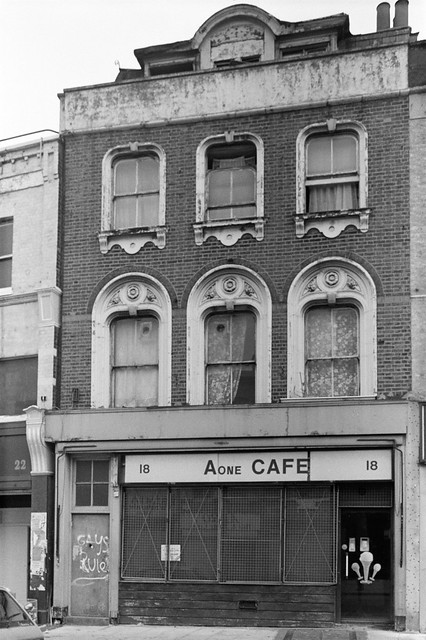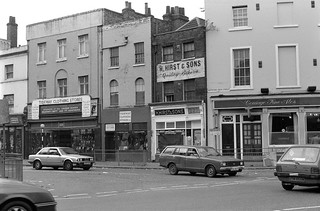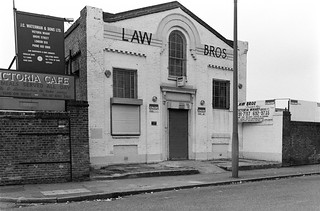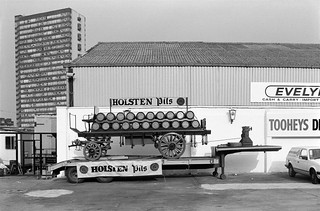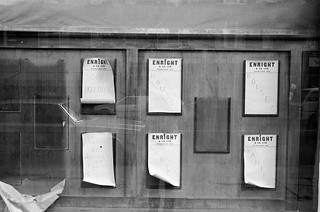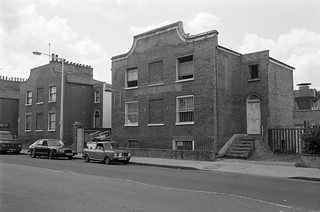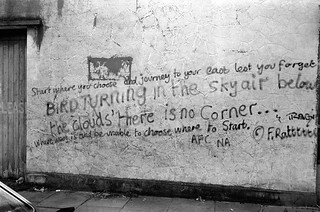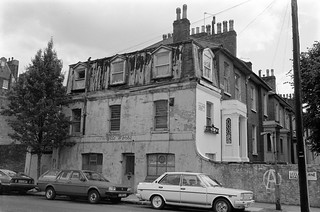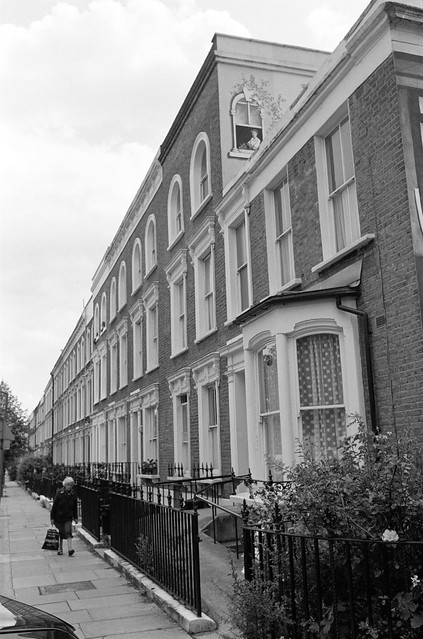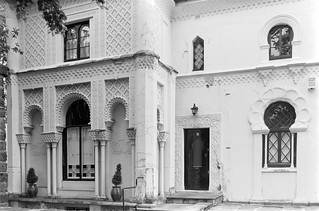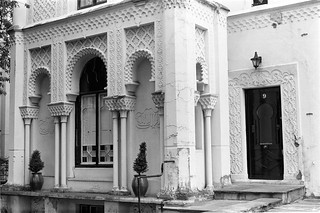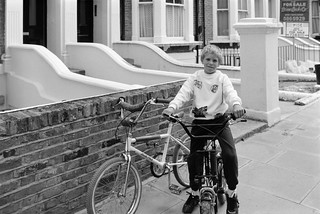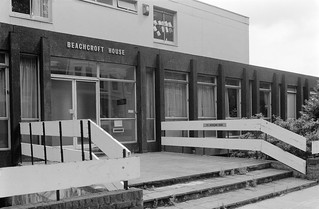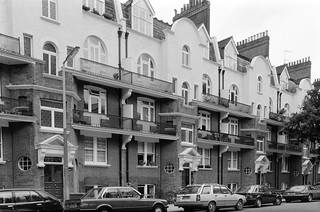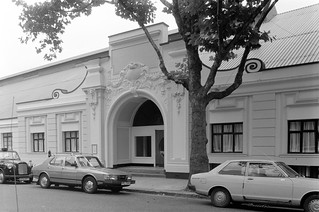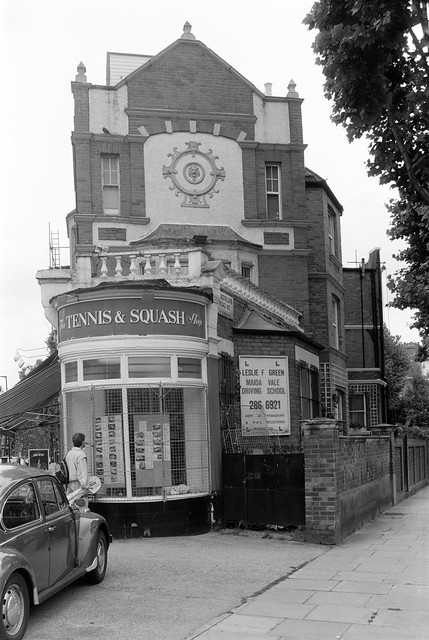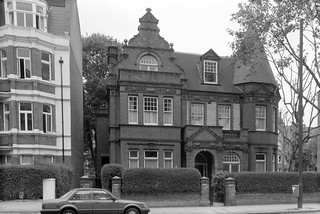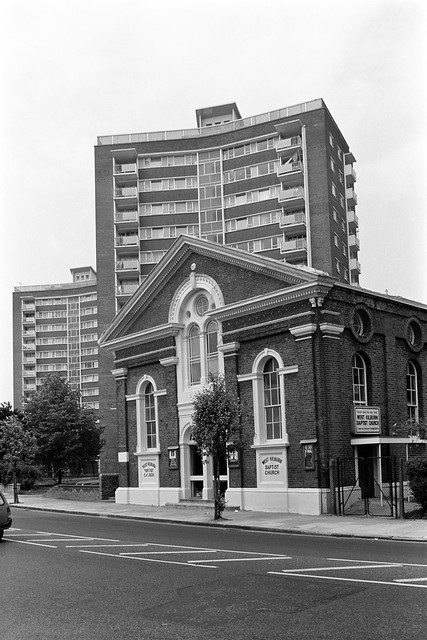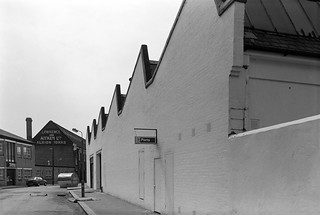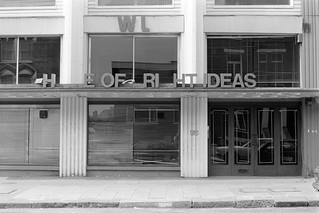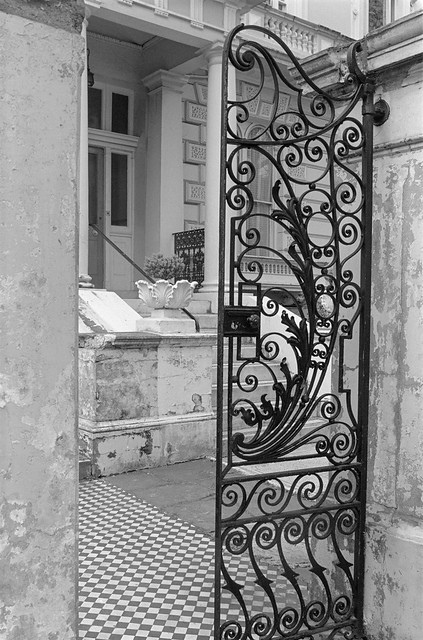My second post on my walk in Walworth on 8th January 1989. The start of this walk is
Elephant, Faraday, Spurgeon & Walworth Road
Post-war Pritchard House (left) has been demolished but the house at 66 Wansey St in the right half of the picture is still there. Everything to its left has now gone with only the steps of No 68 remaining for a small new block of two social housing flats.
The street now continues through where Pritchard House was to Brandon Street and it is now part of the Larcom Street Conservation Area. No 66 probably dates from around 1860 and it and other houses on the street are probably part of the earliest development of the area.
66 Wansey St comes at the end of a long terrace – longer when built as there is a gap between 46 and 54 with a post-war infill block almost certainly following war damage. The house is the grandest of those surviving and the only one with a carriage entrance. The street then ended here, with Gurney St at right angles.
The area suffered heavily in the Blitz, with houses in the area being damaged or destroyed, including one of the greatest disasters of the bombing. Bombs hit nearby 6 Gurney St, close to the New Kent Road, damaging it and other houses on the last night of the Blitz, 10/11 May 1941, but it was only over a year later than a huge unexploded bomb that had been buried deep under the rubble, totally destroying 6 Gurney St and the two houses on each side and severely damaging many others in the surrounding area. 18 people were killed and 62 severely injures. This house on Wansey St was at the limit of broken glazing, over 200 yards away.
This block was a part of the Heygate Estate, neglected and demonised by Southwark Council and eventually demolished to allow for development of the area largely as private housing mainly sold to overseas investors.
Built around 1900 thanks to the efforts of the then vicar of nearby St John’s Church, the Rev. A W Jephson, this remains in use as a community centre. There is now a block of flats to its left.
The Heygate Estate, one of the better planned council estates of its era was by designed by Tim Tinker and completed in 1974. Southwark Council saw an opportunity to profit from redeveloping the area and began a process of demonising the estate, which had been allowed to deteriorate. What had been social housing for around 3000 people provided only 82 socially rented homes in the new development, much of which was sold to overseas investors.
They ended up making a loss as having spent around £65 million on emptying it and scheming for its redevelopment against a strong campaign by residents they sold it to Lendlease for £50 million. However some councillors and officers are said to have done rather well out of it personally.
Another view of the Heygate from the outside. Like many developments of its time a central boiler provided heating efficiently to all or many of the properties, though often inadequate maintenance meant such systems broke down.
I’m unsure of the purpose of this large open area or of the strange markings on it.
The overhead walkway from which I took this picture was a part of the Heygate Estate and demolished with it. Morris Court, the Peabody flats it shows are still there on the corner with Larcom St. The Peabody Walworth Estate was built around 1915 replacing slum housing and modernised in the 1980s. There are a number of blocks around a large central courtyard along Rodney Road, Content St and Wadding St.
This is taken from another walkway on the estate. As a non-resident I found these rather easy to get lost on as they were not shown on my mpas, but although the estate had a bad reputation I never experienced any problems, and it was certainly pleasant to be away from cars which were often a hazard when taking pictures. But it would have possibly seemed more threatening late at night rather than on a Sunday morning.
Another picture from one of the walkways around this corner of the Heygate Estate, which perhaps shows some of my confusion. It also shows a few of the many trees which had been planted in the area, which had just about come to maturity when the estate was demolished.
More from this walk through Walworth shortly.

